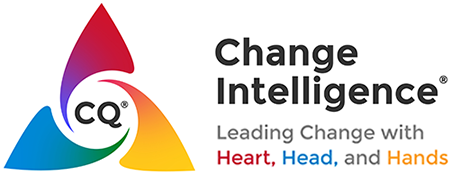Twenty-five years ago the ground broke in a cornfield in Indiana for an innovative new type of steel mill. Nippon Steel of Japan and Inland Steel of the U.S. partnered with the United Steelworkers of America (USWA) to construct I/N Tek and I/N Kote. The mill broke new ground both in its “technical” system, as well as in its “people” system.
After spending the recession years of the mid-80’s laboring in the Rustbelt and consulting with firms that were in bankruptcy, in danger of insolvency, or in general needing to “change or die,” the opportunity to work with a start-up company was a thrilling adventure early in my career. As part of the renaissance of American steel, the company was going to be a radical departure from traditional, integrated mills of the past. Instead it would be founded upon lean, continuous operations technologies. To run the new type of “technical system,” union and management wanted a new type of “people system” – a new vision of partnership – a self-managed team approach.
During our design team meetings as the mill was built and commissioned, the dark joke was that “either I/N Tek and I/N Kote would be the shining light that would transform the autocratic, outmoded way ‘the old company’ [Inland Steel’s main integrated steel facility just a few miles away] would do business, or they will send troops to squelch the revolution in the cornfield.” The design and implementation process was filled with excitement – and trepidation.
Last year the parent companies and union hosted a 25th Jubilee to celebrate their Silver Anniversary! Twenty-five years of profit, productivity – and partnership.
Much has changed in over two decades. The joint owners and the union has changed. Nippon is now Nippon Steel and Sumitomo Metals. Inland Steel is now part of ArcelorMittal. The USWA is now the USW. And the steel landscape has changed. Foreign competition. Domestic competition. Customers changing expectations and preferences for lighter metals, new alloys.
Through it all, I/N Tek and I/N Kote has not just survived, but thrived. Through management changes, union changes, employee changes, technology change, industry changes – and on and on.
Why?
Of course, the company is founded upon still-innovative technology and a winning business model. And, a major success factor is the soundness of its founding work culture principals: a TRULY team-based work culture, with people at all levels, in all functions, working together toward a common goal.
Are there problems? Of course.
Opportunities? Yes indeed. And that’s why they contacted me a year ago, to ask me to come back and partner with them once again to “renew the work culture.”
These steelworkers have the savvy to realize that you can’t operate the equipment without periodically shutting down, taking it apart, lubing it up, and sometimes retrofitting it with new and improved parts. Similarly, a work culture needs period maintenance and renewal.
We all can relate to that just thinking about our bodies – which are systems too! Twenty-five years ago, I could work 16 hour days, travel to a new client with little sleep, and do it again. Now, in my second half-century, I need exercise beyond running to catch flights, to eat right, and get a reasonable amount of sleep per night. As the graphic shows, the longer we or any system last, the more energy we need to expend just to maintain “steady state”!

A company’s work culture is a living, evolving entity. At least, it should be if you want to effectively meet the many challenges that your organization will no doubt face, regardless of your industry or business model or geography.
Change Intelligent leaders know they need to remain agile and continually adapt to stay relevant and prosper. As we learned from Jim Collins and his team in How the Might Fall: And Why Some Companies Don’t Give In, companies that succeed into the future – while their peers which are highly successful in the short-term fail – is the combination of:
• Constancy of purpose – focus on vision, mission, and values, and
• Flexibility of process – evolving technologies, tactics, and techniques
Indeed, when I revisited I/N Tek and I/N Kote after two decades, the vision, mission, and values statements we drafted in the early ‘90s were still posted on the wall, in the office areas, operations pulpits, and maintenance rooms, throughout the mill – constancy of purpose. And, now there were employees who were children of the founding team members, upgraded technologies, and new business practices – flexibility of process.
As a leader, do you pay attention to your organization’s work culture? Work culture can seem an amorphous concept, beyond our intentional control. And yet, while not completely in our control, we can have a positive influence on our company culture, regardless of our position, tenure, or age.
Here are some questions to ask yourself, as a leader committed to helping your organization be nimble, agile, and Change Intelligent into the future:
• Does your organization have a vision, mission, or values statement? If so, when is the last time you looked at it? Mentioned it to your team? Used it to guide decision-making and behaviors?
• Do you periodically take a pulse of your culture? What is the level of engagement? Teamwork up, down, and across the organization? Commitment to strategic goals and objectives?
• In what areas can we do better – where does our lofty rhetoric not match the reality of what it’s like to work in our company on a day-to-day basis? On what topics would we benefit from engaging in tough conversations to get ourselves back on track, and in line with our espoused beliefs?
Change Intelligent leaders look to the past to honor collective history, look to the future to progress toward new horizons, and foster collaborative cultures to empower people to partner on the journey together.
